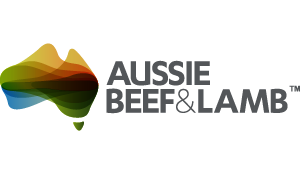Are you a meat lover but conscious of where your food comes from? If so, you'll be happy to know that Australia has one of the best meat traceability systems in the world!
Thanks to the National Livestock Identification System (NLIS), every livestock animal in Australia is traced throughout the supply chain using electronic tags and radio frequency technology. This allows for swift and efficient tracing from the farm to the point of slaughter.
In addition, the Livestock Production Assurance (LPA) programme and the National Feedlot Accreditation Scheme (NFAS) are designed to certify food safety and quality assurance standards. The LPA program is designed to certify food safety and quality assurance standards. The NFAS is a mandatory QA integrity system for Australian feedlots producing grain-fed beef for both the Australian domestic market and all export markets. Under the NFAS, the movement of cattle from the farm to the feedlot must be recorded in the NLIS database. together these schemes ensure producers adhere to strict regulations on feed and water safety, veterinary treatments, and inspections for pesticides or trace metals.
And let's not forget about transport, saleyards, and processing plants. Each step of the way, the beef and lamb animal welfare, meat quality, and meat safety are held standards that guarantee product integrity. The Australian government verifies that all legislation and standards are correctly implemented.
Beef Traceability and Beef Quality Assurance Systems
Underpinning both the LPA and NFAS integrity programs is the National Vendor Declaration (NVD). This links the tracking of cattle from the farm right through transport and processing. The NVD also includes a Property Identification Code (PIC). The PIC system was introduced in the late 1960s and identifies each property and its location with a unique code. The PIC lists exposure the cattle may have had to any agricultural or veterinary chemicals. It also details the cow’s grazing history, and supplementary feeding.
When it comes to moving cattle, transport must meet truck-care standards for beef animal welfare and safety. For traceability, all beef carcasses must be correlated to their PIC numbers, which are stored in a database. Shipping containers destined for export are inspected, and sea-freighted containers are sealed under the Department of Agriculture Australia's supervision. Once inspected, containers cannot be opened until they reach their final destination. Container and seal numbers for all beef exports are stored in the Department of Agriculture database.
Lamb Traceability Begins on the Farm
The core basis of Australia’s lamb traceability system is the PIC, which underpins the NVD and NLIS programs. Before leaving the farm, all sheep must have an NLIS tag, paperwork with the vendors contact details, PIC, and the destination of the sheep.
When flocks arrive at the saleyard, stock agents must check that all sheep are tagged and have their documentation. They then record the sheep transactions that occur in the saleyard in the NLIS database. The National Saleyards Quality Assurance Program (NSQA) addresses key quality issues or hazards within the saleyard sector.
When sheep arrive for processing the operators must check that the sheep are tagged and the required documentation (NVD) accompanies the sheep, then record the transaction in the NLIS database. All exporting plants must follow the Australian Standard and lamb quality assurance systems to ensure meat is processed hygienically.
About Aussie Beef & Lamb UK
Aussie Beef & Lamb UK is a Meat & Livestock Australia (MLA) owned brand that promotes Australian red meat across export markets. It is used to denote high-quality red meat raised, produced and exported in a clean environment, with the highest standards of animal welfare, traceability and food safety.
Aussie Beef & Lamb UK showcases the best of Australia and works to promote advances in sustainability within the Australian red meat industry, which as a forerunner in this field is constantly improving and evolving its plans to reduce the environmental impact of meat production.
MLA is a service provider to the red meat industry, funded by livestock transaction levies paid on livestock sales, it delivers research and development, marketing, and R&D programmes globally, and acts as a custodian of the ABL brand.
Australia’s animal health status is one of the best in the world. As a country we have taken a global leadership role by enacting legislation to govern the grazing and feeding rules of our animals. We have also implemented disease surveillance programs in line with international standards. These are complemented by off-farm food safety initiatives. All of which help in building a culture of shared responsibility among our livestock owners.
So go ahead and enjoy your Australian beef or lamb with peace of mind, knowing it is clean, safe, ethically produced, and natural!

